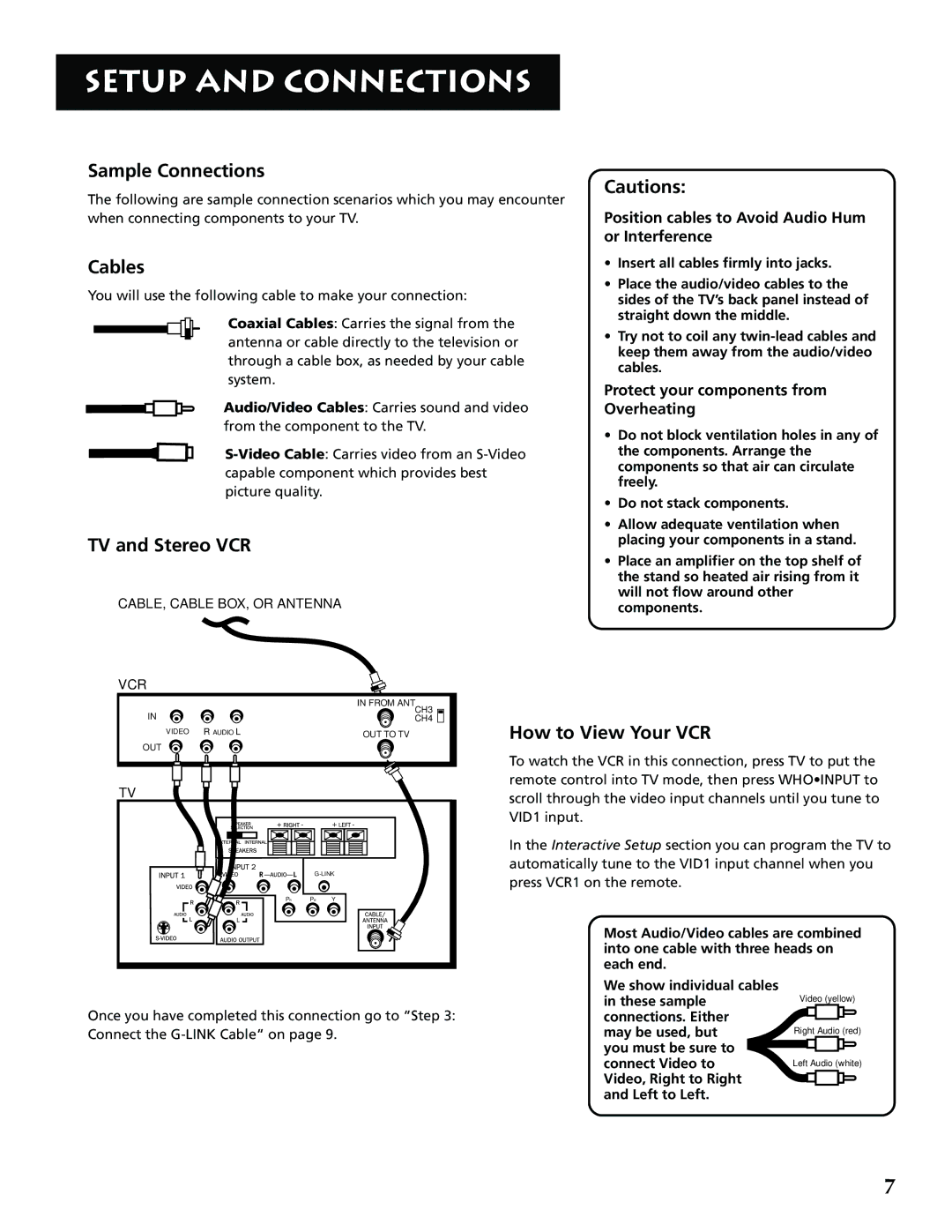
SETUP AND CONNECTIONS
Sample Connections
The following are sample connection scenarios which you may encounter when connecting components to your TV.
Cables
You will use the following cable to make your connection:
Coaxial Cables: Carries the signal from the antenna or cable directly to the television or through a cable box, as needed by your cable system.
Audio/Video Cables: Carries sound and video from the component to the TV.
TV and Stereo VCR
CABLE, CABLE BOX, OR ANTENNA
Cautions:
Position cables to Avoid Audio Hum or Interference
•Insert all cables firmly into jacks.
•Place the audio/video cables to the sides of the TV’s back panel instead of straight down the middle.
•Try not to coil any
Protect your components from Overheating
•Do not block ventilation holes in any of the components. Arrange the components so that air can circulate freely.
•Do not stack components.
•Allow adequate ventilation when placing your components in a stand.
•Place an amplifier on the top shelf of the stand so heated air rising from it will not flow around other components.
VCR |
|
|
|
| IN FROM ANT |
IN |
| CH3 |
| CH4 | |
VIDEO | R AUDIO L | OUT TO TV |
|
| |
OUT |
|
|
TV |
|
|
|
R | L | ||
PR |
| PB | Y |
How to View Your VCR
To watch the VCR in this connection, press TV to put the remote control into TV mode, then press WHO•INPUT to scroll through the video input channels until you tune to VID1 input.
In the Interactive Setup section you can program the TV to automatically tune to the VID1 input channel when you press VCR1 on the remote.
Most Audio/Video cables are combined into one cable with three heads on each end.
Once you have completed this connection go to “Step 3: Connect the
We show individual cables in these sample connections. Either
may be used, but you must be sure to connect Video to Video, Right to Right and Left to Left.
Video (yellow)
Right Audio (red)
Left Audio (white)
7
